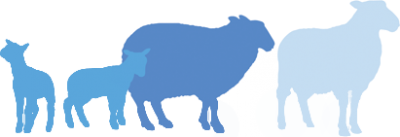
George's Liver Fluke Journal: Entry 5
18th August 2014
George Milne, NSA Scottish Region Development Officer, farms near St. Andrews on the east coast of Scotland. This is not a part of the world where fluke would be expected to cause major losses, but in the winter of 2012/13 that is exactly what happened. George has kindly let his farm be used as a fluke surveillance farm in a project funded by the Scottish Government and Novartis Animal Health, and supported by Moredun Research Institute, Scottish Rural College, University of Edinburgh , Parkside Vets and the National Sheep Association. The surveillance farm is part of the Scottish Fluke Action Group, a group representing many aspects of the Scottish sheep industry that aims to give real-time information to vets and farmers on managing fluke. Read previous instalments of the journal here: Entry One; Entry Two; Entry Three; Entry Four.
George’s Journal
The summer is charging on and with the weather being so good it is hard to think about fluke control, but with the mild winter last year and modest rainfall this summer I don’t want to be caught out in the autumn.
Lambing went well and lambs have thrived this summer, the grass has grown well and some of the earlier lambs have already gone. The monitoring of fluke is continuing after we treated the sentinel animals in the late spring, as they had high fluke counts. What we have been doing since then is we tested dung for fluke eggs from groups of the adult sheep on the farm in June and it was good to see that there were very low numbers for eggs. The animals were therefore not treated and we hope that will mean there were very few fluke eggs to infect the mud snails in the early summer and the number of fluke in the autumn will be reduced.
The monitoring we are doing now is to see what and when the sheep pick up fluke. The ideal candidates for this are this year’s lambs, as they have never met fluke before. Robert and Richard, my vets, have been up and blood sampled some of the lambs to see if they have any fluke antibody, which can tell us if they have been infected this year. The lambs tested showed very low levels and may have come from their mother’s milk. We also tested dung for fluke eggs and the fluke protein using the new copro-antigen test in the lambs and their mothers. The good news is that the tests are all nearly negative or very low positives so our control measures plus the good weather seem to be keeping the fluke at bay. However I know it has not gone away and we will be monitoring the lambs and their mothers every month so we can react quickly to any rising fluke challenge.
This summer we have also being trying to remove snail habitats and improve the pasture. In some fields we have also some areas that we aren’t able to sort out at the moment but I will be careful to avoid when the fluke challenge is at it’s greatest.
NSA Sheep 2014
At the end of July, Dr Philip Skuce and myself were asked to speak at the NSA Sheep 2014 event at Malvern, Worcestershire, on the experiences on the surveillance farm and how it can help other farmers. The message we delivered was that every farm is different and you need to work with your vet or prescriber to do some monitoring to make sure your treatments and control programmes are effective. As Philip put it: “Consider management options and, if you need to treat, use the right drug at the right time on the right animals at theright dose.”
Monitoring may seem like extra work but Margaret Dalton, a Welsh sheep farmer who also spoke at the event, along with vet Frances Jones and Dr Neil Mackintosh, firmly believes it is saving her money as she knows that she is treating her animals at the right time.
Next time we will be coming into the autumn so the monitoring in August will give us a better idea of the challenge fluke is going to have on the stock this year and we will discuss the fluke control in my cattle as well.



